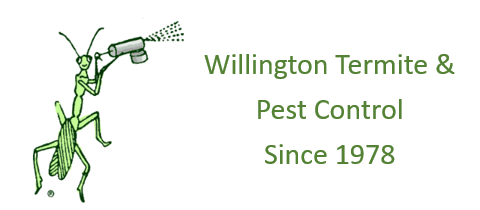FAQs
Over 30 Years of Experience | Licensed Services | Free Estimates
Over 25 Years of ExperienceLicensed ServicesFree Estimates
Willington Termite & Pest Control FAQs
- How do termites get in my house?
Subterranean termites in New England are required to live in the soil. If they expose themselves to the air, they will dry out and die. These termites employ underground travel as the means to move from one food source to another. In case your neighbors find their home attacked by termites, there's a good chance they are already on their way to yours.
- Is saw dust a sign of termites?
No, when termites take a bite out of wood they swallow it. Saw dust is usually a sign of carpenter ants.
- I see lots of wings on the floor in the spring, is this a sign of termites?
Yes because termite reproduction takes place during spring. They usually swarm to the surface to mate and fly away to another location and return to the soil.
- I see large black ants in my kitchen and bathroom. Could these be carpenter ants?
Yes, carpenter ants are found in various sizes, but are generally described as large, black heavily built ants. Areas of your home that are good sources of water draw these ants.
- Do carpenter ants eat wood?
No, carpenter ants chew the wood for creating tunnels for their nest. Wet wood is their first preference because it is easier to work with. Open voids in walls, doors, etc. also serve as nests for these ants.
- What is the best method of eliminating carpenter ants?
You can use baits coupled with an exterior treatment of non repellent insecticides. In most cases, the nest is almost impossible to find, so let the ants do all the leg work in bringing the active ingredient back to the nest. Formation of new nests are prevented due to the long lasting residual, which also eliminates nest in the structure by intercepting ants leaving it.
- What chemicals do you use?
We use Termidor, America's #1 termite defense against dry wood termites and subterranean termites. Made using a revolutionary new non repellent or "undetectable" chemical technology, Termidor has consistently proven itself to be the most effective and fastest at eliminating termites in numerous trials across the United States and around the world. It has achieved a level of efficacy that no other termite control system of any type has ever achieved. Also, Termidore has been proven to be equally effective in keeping termites from coming back.
- How will you apply Termidor to my home?
As Termidor Certified Professionals, we will apply a liquid dilution of Termidor along the foundation walls of your home to create a continuous treatment zone. The application method is called "trenching and rodding," and may sometimes require drilling holes into the concrete foundation of your home for maximum protection. We may also treat the interior of your home, depending on the extent of the termite infestation and damage.
- Is it environmentally responsible?
Termidor is one of the most thoroughly reviewed termite control products in history. Registered with the Environmental Protection Agency, Termidor can only be applied by a pest control professional who has been trained in correct application methods. It has been proven to be incredibly effective even at low application rates. For an average home treatment, only about 8 ounces of the active ingredient (fipronil) is actually used. Termidor bonds to the soil in which it is applied, so homeowners need not worry about soil movement. In addition, Termidor's active ingredient, fipronil, is used extensively on food crops around the world and as the leading product for flea and tick control on dogs and cats since 1995.

Share On: